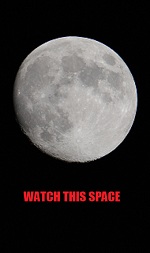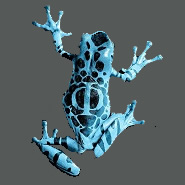Watch the bouncing droplet
Uploaded by strainoff on Jun 7, 2009
I saw this on the TV show Time Warp and thought that I could do that. Well it turns out that Noah and I could do it! I was a little surprised at how small the parameter space was to achieve a good series of bounces. Near the end of this clilp, you can see waves entering from the lower right. I think these are reflections of a low frequency sloshing modes set up by the initial droplet. The smallest droplet bounces off these waves and start moving off to the side. In any case it is pretty cool. The only issue is that there was some dust on the sensor (dark spots that don’t move). The camera is a Vision Research Phantom v7.3 high speed video camera.
It is fascinating (and beautiful) to see water behave this way in such detail and I thought you all might think that this is as cool as I do.
It seems bizarre as what is revealed goes against our innate impression of what water is, how it should act and what it can do.
Great food for thought, too. There are so many things in nature that happen all the time and right before our very eyes… all forever unnoticed due to size or speed or both. Although a poster on the forum claims to see this regularly with his unaided eyes and has called it the “Anti Bubble” effect. … hmmm.
Here is another video of the phenomena:
Cascade Coalescence
Uploaded by videoslmpt on May 31, 2010
High speed video of a droplet coalescence at the surface of deionized water. Filmed at the Laboratory of Porous Media and Thermophysical Properties.
www.lmpt.ufsc.br
And here is a great article that appears on the io9 site, with a hat-tip to this ATS article for providing the lead:
High speed video reveals the bizarre physics of an ordinary water droplet
The video is of an effect known in fluid dynamics as the coalescence cascade, which can be observed (provided you have access to a video camera with a sufficiently high frame rate) when a drop of liquid is deposited very gently onto the surface of a layer of the same liquid. Fuck Yeah Fluid Dynamics explains:
When a droplet impacts a pool at low speed, a layer of air trapped beneath the droplet can often prevent it from immediately coalescing into the pool. As that air layer drains away, surface tension pulls some of the droplet’s mass into the pool while a smaller droplet is ejected. When it bounces off the surface of the water, the process is repeated and the droplet grows smaller and smaller until surface tension is able to completely absorb it into the pool.
Pretty awesome, right? In the video shown up top, the effect manages to repeat itself four times (in what scientists who study fluid mechanics call “events”) before the viscous properties of the resting pool become too strong for the smallest drops to withstand coalescing completely.
And while the highest number of events I’ve been able to find anywhere else is five (see the video on the left), MIT’s John Bush claims to have observed as many as seven such events in a row. I just wish he’d included a video of it…[Spotted on Fuck Yeah Fluid Dynamics]
Enjoy Mother Nature. She’s a beautiful girl.
Peace.



































 What’s All This, Then? is copyright © 2009 to the present by Ignatius F Makarevich - All rights reserved worldwide.
What’s All This, Then? is copyright © 2009 to the present by Ignatius F Makarevich - All rights reserved worldwide.


